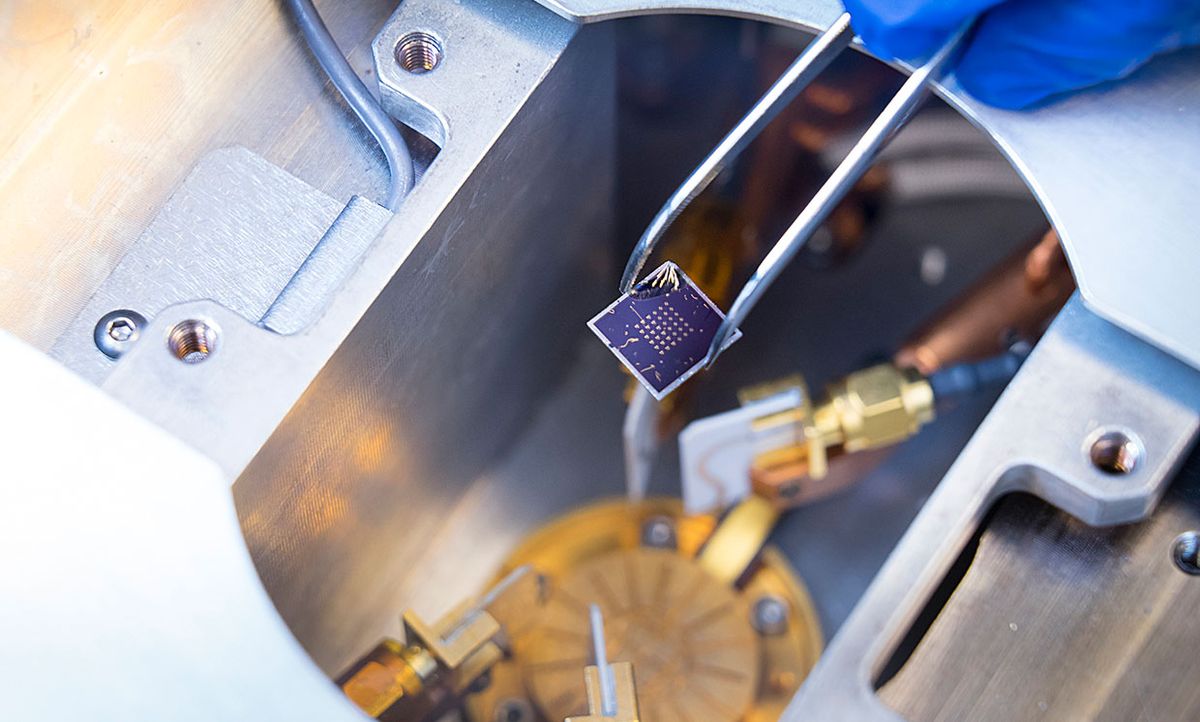Engineers at Purdue University and at Georgia Tech have constructed the first devices from a new kind of two-dimensional material that combines memory-retaining properties and semiconductor properties. The engineers used a newly discovered ferroelectric semiconductor, alpha indium selenide, in two applications: as the basis of a type of transistor that stores memory as the amount of amplification it produces; and in a two-terminal device that could act as a component in future brain-inspired computers. The latter device was unveiled last month at the IEEE International Electron Devices Meeting in San Francisco.
Ferroelectric materials become polarized in an electric field and retain that polarization even after the field has been removed. Ferroelectric RAM cells in commercial memory chips use the former ability to store data in a capacitor-like structure. Recently, researchers have been trying to coax more tricks from these ferroelectric materials by bringing them into the transistor structure itself or by building other types of devices from them.
In particular, they’ve been embedding ferroelectric materials into a transistor’s gate dielectric, the thin layer that separates the electrode responsible for turning the transistor on and off from the channel through which current flows. Researchers have also been seeking a ferroelectric equivalent of the memristors, or resistive RAM, two-terminal devices that store data as resistance. Such devices, called ferroelectric tunnel junctions, are particularly attractive because they could be made into a very dense memory configuration called a cross-bar array. Many researchers working on neuromorphic- and low-power AI chips use memristors to act as the neural synapses in their networks. But so far, ferroelectric tunnel junction memories have been a problem.
“It’s very difficult to do,” says IEEE Fellow Peide Ye, who led the research at Purdue University. Because traditional ferroelectric materials are insulators, when the device is scaled down, there’s too little current passing through, explains Ye. When researchers try to solve that problem by making the ferroelectric layer very thin, the layer loses its ferroelectric properties.
Instead, Ye’s group sought to solve the conductance problem by using a new ferroelectric material—alpha indium selenide— that acts as a semiconductor instead of an insulator. Under the influence of an electric field, the molecule undergoes a structural change that holds the polarization. Even better, the material is ferroelectric even as a single-molecule layer that is only about a nanometer thick. “This material is very unique,” says Ye.
Ye’s group made both transistors and memristor-like devices using the semiconductor. The memristor-like device, which they called a ferroelectric-semiconductor junction (FSJ), is just the semiconductor sandwiched between two conductors. This simple configuration could be formed into a dense cross-bar array and potentially shrunk down so that each device is only about 10 nanometers across, says Ye.
Proving the ability to scale the device down is the next goal for the research, along with characterizing how quickly the devices can switch, explains Ye. Further on, his team will look at applications for the FSJ in neuromorphic chips, where researchers have been trying a variety of new devices in the search for the perfect artificial neural synapse.
Samuel K. Moore is the senior editor at IEEE Spectrum in charge of semiconductors coverage. An IEEE member, he has a bachelor's degree in biomedical engineering from Brown University and a master's degree in journalism from New York University.



